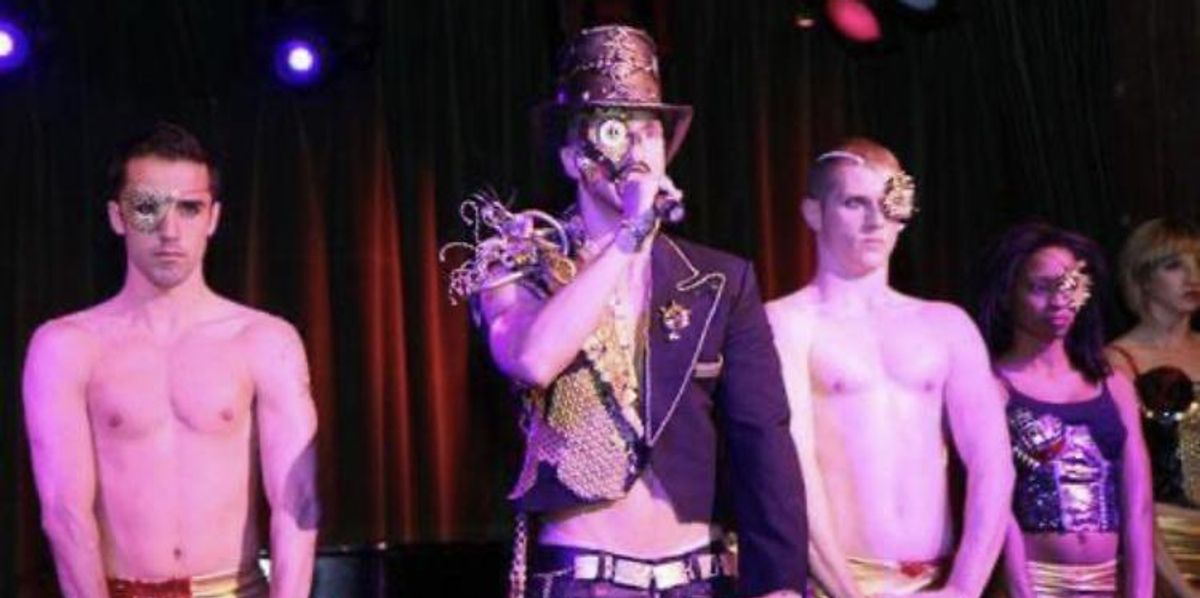How Do You Help Nondancers Feel Comfortable Moving Onstage?
Too many people are told early on in their lives that they “can’t dance.” It’s something that can stick with them into adulthood. Commercial choreographers all too often encounter the detrimental effects of this myth when they’re paired with actors, musicians or models who’ve taken these words to heart and ended up afraid of dancing.
So what does it take to get people who believe they can’t dance to feel—and look—comfortable moving onstage or on set?
Choreographer Caitlin Gray has worked with all kinds of nondancers on everything from music videos to TV shows, live theater to movie premieres. She finds those without a strong dance background often end up being some of her favorite collaborators: “It’s always rewarding to see someone grow from being nervous about moving onstage to becoming confident, secure and powerful, able to add another color to their artistic palette.”
She recently shared with Dance Magazine a few of the strategies she’s learned to help anyone feel more comfortable dancing.

Courtesy Gray
Make Them Feel Safe
Gray says, first and foremost, the most important thing is establishing trust. “Once people feel comfortable, they can let go of preconceived notions of how they feel about themselves as dancers,” she says. “They have to trust that the choreographer will never let them look bad, even when they’re not in their comfort zone.”
Use What Comes Naturally
Choreographers have to meet artists where they are. Gray usually starts new projects by watching the person she’s working with perform in their element; for instance, she’ll ask a musician to sing one of their tracks.
“I’ll watch how they naturally move as they perform so I can build on that organically,” she says. “I never go in with set movements that I’ve decided we’re going to work on.” Instead, she plays off of what the artists are already doing so that every phrase and choreographed action suits them.
Hear Out Their Ideas
Sometimes, artists come with their own thoughts about what they want to do. For instance, when working with the late queer dance-music artist Ari Gold (who just died on February 14), Gray says he always had specific ideas, like dramatic onstage costume changes, very staccato movements on particular beats, or group floorwork where he was in the center. “He’d come to rehearsal with certain movements he wanted incorporated into a show,” she says. Even though as a child he’d even been laughed at on TV for his lack of dance talent, Gray worked with him to find choreography that made him feel powerful onstage.
“After he performed ‘Make My Body Rock’ at Night of a Thousand Gowns, his mom—who was a professional dancer—told me, ‘You turned my boy into a dancer!’ ” says Gray. “She was so proud to see him not just singing but dancing as well.”
Consider the Little Things
Especially with younger artists, Gray often finds the choreography drills down to the smallest things, like how they handle the microphone. “Which hand grabs the stand, if they take the mic out to move stage left or right, then if they hold it in their left hand or right hand—all of that can be nerve-racking,” she says. Taking the time to choreograph and coach these moments can help an artist move more naturally once they’re onstage.
For those who are most afraid of movement, Gray will focus on walking and simply finding the beat, then might add in some very basic foot patterns. “Simple, everyday things they can do on the beat,” she says. “Which is what dance is!”
Stay Positive
Gray finds that the mood in the rehearsal room can make all the difference. “Keeping the environment light and upbeat really helps,” she says. “Every small win should be celebrated so they begin to feel excited about coming to rehearsal instead of fearful.”

Courtesy Gray
Don’t Underestimate
Successful artists in any genre make it to the top not only because of their talent, but because of their work ethic. “Even if they’re learning something new that’s not in their wheelhouse,” says Gray, “you can tell immediately why they are as successful as they are: their dedication, their focus.” When learning movement, most take that same approach, so choreographers should be prepared to work just as hard—and to expect results.





